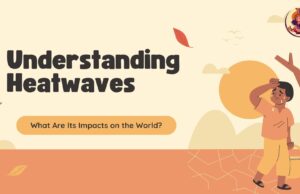The recent surge in cases of Human Metapneumovirus (HMPV) in China has captured global attention, raising concerns about its potential impact on public health. To help you stay informed and protected, this article provides essential details about HMPV Virus, its symptoms, transmission, and preventive measures.
What Do We Currently Know?
HMPV is not a new virus. It was first discovered in 2001 and has since been recognized as a common cause of respiratory infections worldwide. However, the recent outbreak in China has highlighted the virus due to an unusual spike in cases. Although it is typically less severe than influenza or COVID-19, HMPV can lead to significant health issues, especially in vulnerable populations.
What Is HMPV, and Why Is It a Concern in China?
Human Metapneumovirus belongs to the Paramyxoviridae family, which includes other respiratory viruses such as RSV and measles. HMPV primarily causes respiratory tract infections and is often linked to seasonal outbreaks. The increased focus on HMPV in China arises from its strain on healthcare systems, with a notable rise in severe cases and hospitalizations among high-risk groups.
Recognizing the Symptoms of HMPV
HMPV infections can vary in severity, with symptoms ranging from mild to severe. Common symptoms include:
- Coughing
- Nasal congestion or runny nose
- Fever
- Shortness of breath
- Sore throat
- Wheezing
- Fatigue or weakness
In more severe cases, HMPV can lead to complications such as bronchiolitis, pneumonia, or even respiratory failure.
How Does HMPV Spread?
HMPV is transmitted primarily through respiratory droplets when an infected person coughs or sneezes. It can also spread by touching surfaces contaminated with the virus and then touching the face, particularly the mouth, nose, or eyes. Similar to other respiratory illnesses, HMPV is most prevalent during the late winter and spring seasons.
Who Is Most Vulnerable to HMPV?
Some groups are at a higher risk of developing severe illness from HMPV. These include:
- Infants and young children: Their immature immune systems make them particularly susceptible.
- Elderly individuals: Age-related immune decline increases their vulnerability.
- People with chronic medical conditions: Those with asthma, COPD, or heart disease are more likely to experience severe symptoms.
- Immunocompromised individuals: A weakened immune system heightens the risk of complications.
- Preventing HMPV: Steps You Can Take
- Preventing HMPV involves adopting effective hygiene practices and boosting overall immunity. Here are key measures:
- Wash your hands frequently: Use soap and water for at least 20 seconds or a hand sanitizer with at least 60% alcohol.
- Avoid close contact with sick individuals: Keep your distance and avoid sharing personal items.
- Disinfect high-touch surfaces regularly: Clean doorknobs, electronic devices, and countertops frequently.
- Practice good respiratory hygiene: Cover your mouth and nose with a tissue or your elbow when coughing or sneezing.
- Support your immune system: Eat a nutritious diet, exercise regularly, and ensure sufficient sleep.
What Should You Do If You Have Symptoms?
If you suspect you have contracted HMPV, consider these steps:
- Isolate yourself: To reduce the risk of spreading the virus to others.
- Consult a healthcare provider: Especially if symptoms worsen or persist.
- Rest and stay hydrated: These are crucial for recovery.
Is There a Vaccine or Treatment for HMPV?
At present, there is no specific antiviral treatment or vaccine for HMPV. Management primarily involves supportive care, including hydration, over-the-counter medications to reduce fever, and oxygen therapy in severe cases. While researchers are exploring vaccine options, they are not yet available.
Comparing HMPV to COVID-19
Though both HMPV and COVID-19 are respiratory viruses, they differ in several key aspects:
- Cause: HMPV is part of the Paramyxoviridae family, whereas COVID-19 is caused by the SARS-CoV-2 virus.
- Severity: COVID-19 often presents with a wider range of symptoms and has a higher mortality rate.
- Transmission: Both viruses spread via respiratory droplets, but COVID-19 is generally more contagious.
- Prevention: Preventive measures like hand hygiene and mask-wearing are effective for both, although COVID-19 has specific vaccines available.
Final Thoughts
The HMPV outbreak in China highlights the importance of awareness and preventive actions. While the virus poses significant risks, especially to high-risk groups, its impact can be mitigated through proper hygiene, early medical intervention, and public education. Staying informed and adopting proactive measures can help protect you and your community from the effects of HMPV.















